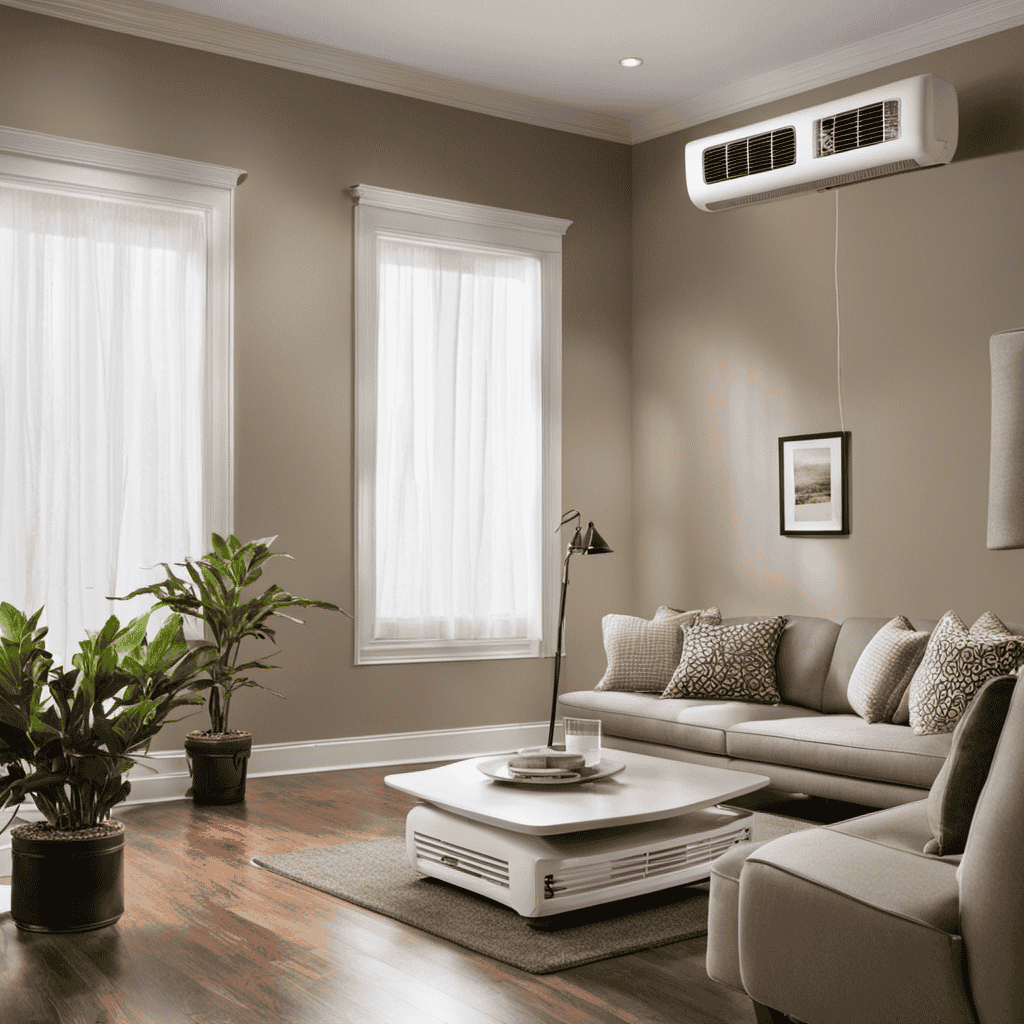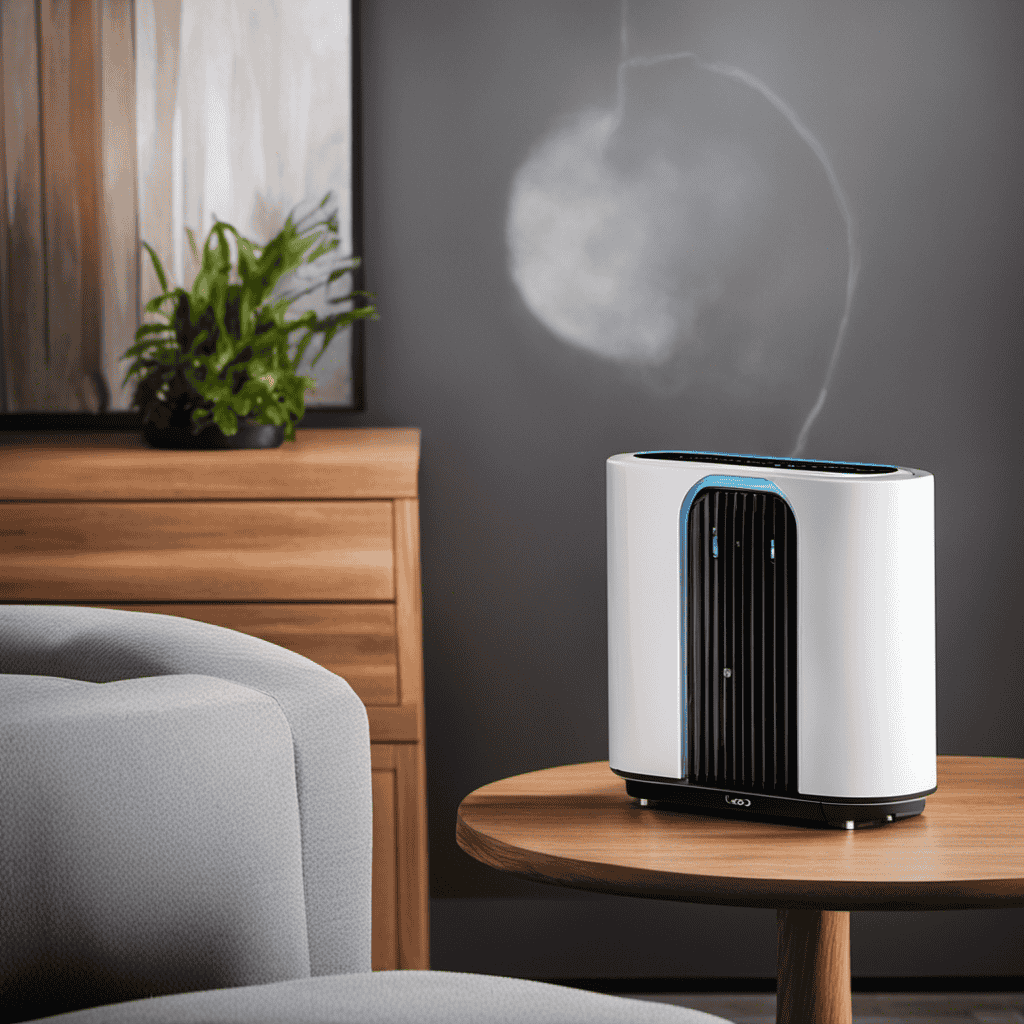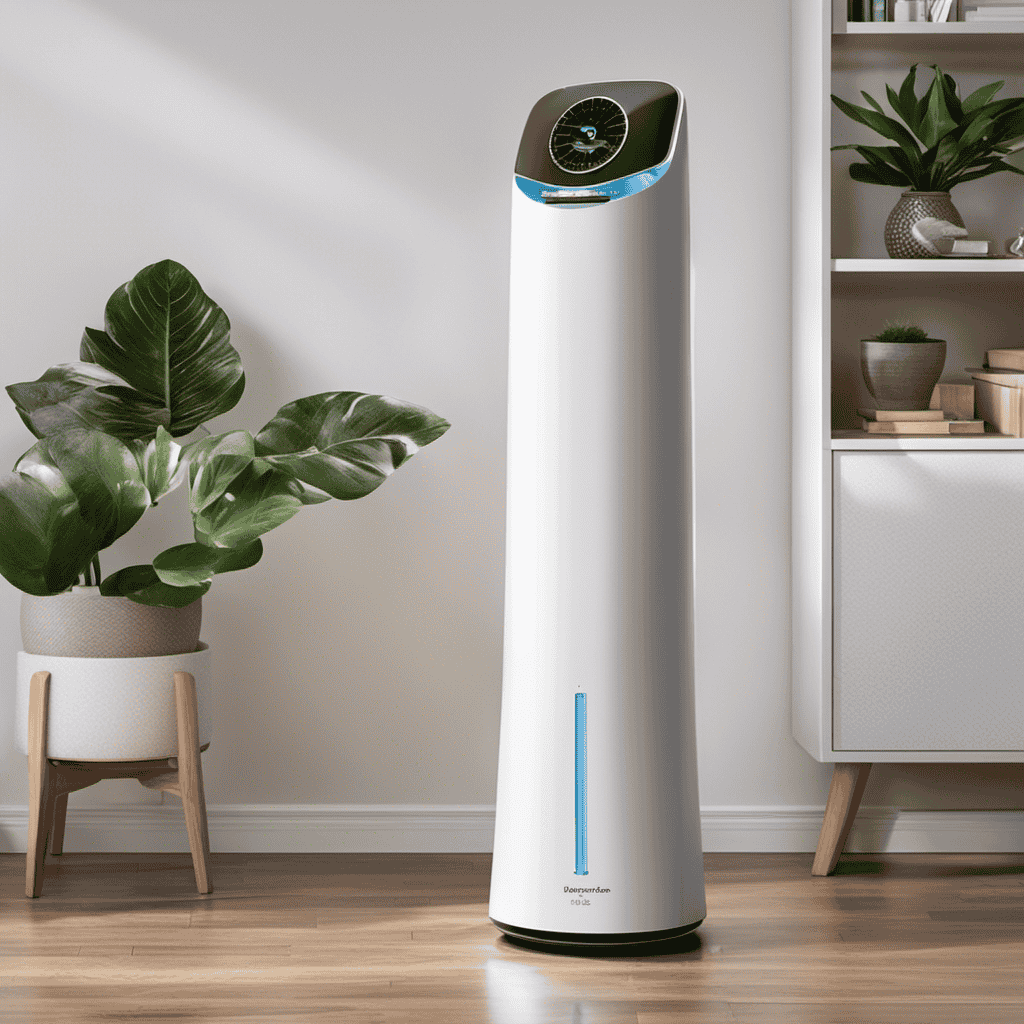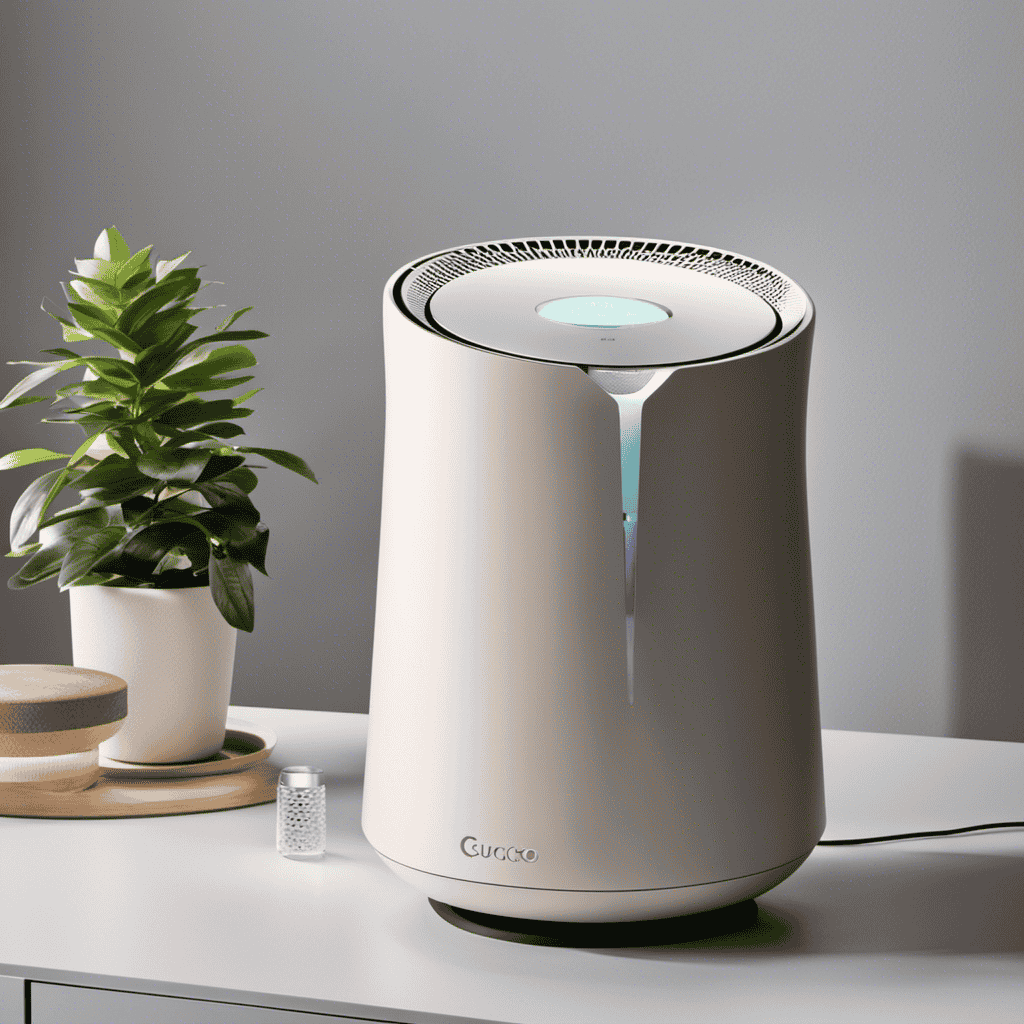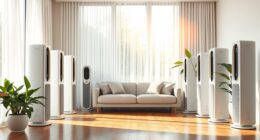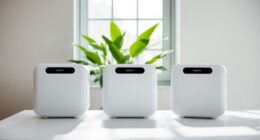So, you have found mold in your home and are considering which dehumidifier and air purifier to purchase to effectively address this issue. Maintaining proper humidity levels is key in preventing mold from spreading, and having the appropriate equipment is vital.
In this article, I will guide you through the process of choosing the best dehumidifier and air purifier for mold. We will explore different types, important factors to consider, and recommended brands that will help you regain control over your indoor air quality.
Let’s dive in and take the first step towards a mold-free environment.
Key Takeaways
- Mold thrives in damp and humid environments, so controlling moisture levels is crucial in inhibiting mold growth.
- Dehumidifiers remove excess moisture from the air, while air purifiers filter and trap mold spores, promoting better air quality.
- When choosing an air purifier for mold control, consider factors such as room size, specific features (HEPA filters, UV-C light technology), effectiveness, customer reviews, and brand reputation.
- When choosing a dehumidifier for mold prevention, look for features like adjustable humidity level settings, energy efficiency (Energy Star certification), appropriate capacity for the space, flexible drainage options for easy water removal, and choose the right size based on square footage and humidity levels.
The Importance of Controlling Humidity Levels
To prevent mold growth, you should make sure to control the humidity levels in your home by using a dehumidifier and air purifier.
Controlling moisture levels is crucial in preventing mold growth, as mold thrives in damp and humid environments. By reducing the humidity in your home, you create an unfavorable environment for mold to grow and spread.
A dehumidifier works by removing excess moisture from the air, effectively lowering the humidity levels. This helps to inhibit the growth of mold and other allergens.
An air purifier, on the other hand, filters the air, capturing and trapping mold spores and other airborne pollutants. Together, these two devices can help maintain a dry and clean indoor environment, preventing mold growth and promoting better air quality.
Understanding the different types of dehumidifiers will help you choose the right one for your specific needs.
Understanding the Different Types of Dehumidifiers
Understanding the different types will help you choose the most effective solution for your mold problem. When it comes to dehumidifiers, there are two main types to consider: portable and whole house.
-
Portable dehumidifiers are smaller, more affordable, and can be moved around to target specific areas with high humidity. They are ideal for single rooms or smaller spaces.
-
Whole house dehumidifiers, on the other hand, are larger units that are installed directly into your HVAC system. They can effectively dehumidify your entire home and are especially beneficial if you have a widespread mold issue.
Additionally, there are two types of dehumidifiers based on the technology they use: desiccant and refrigerant.
-
Desiccant dehumidifiers use a chemical drying agent to remove moisture from the air. They are effective in lower temperature environments and are quieter compared to refrigerant dehumidifiers.
-
Refrigerant dehumidifiers, on the other hand, use a cooling system to condense moisture from the air. They are more energy-efficient and suitable for higher temperature environments.
Understanding the differences between these types of dehumidifiers will help you make an informed decision based on your specific needs. Now, let’s move on to the next section, where we will discuss the factors to consider when choosing an air purifier for mold.
Factors to Consider When Choosing an Air Purifier for Mold
When choosing an air purifier for mold, it’s important to consider factors such as the size of the room and the specific features you need.
Factors to consider include the size of the room, as larger rooms may require more powerful air purifiers to effectively control mold. Additionally, consider the specific features you need, such as HEPA filters or UV-C light technology, which can help to effectively remove mold spores from the air.
It’s also important to consider the effectiveness of air purifiers for mold control. Look for air purifiers that have been specifically tested and proven to effectively remove mold spores from the air. Reading customer reviews and researching the brand’s reputation can also provide valuable insights into the effectiveness of the air purifier for mold control.
Top Features to Look for in a Dehumidifier for Mold Prevention
One important feature to look for in a dehumidifier is an adjustable humidity level setting. This allows you to control and maintain the desired level of moisture in your home. This feature is crucial when choosing the right dehumidifier for mold prevention.
Along with this feature, there are several other important factors to consider:
-
Energy Efficiency: Look for a dehumidifier that is Energy Star certified. This ensures that it operates efficiently and saves you money on your energy bills.
-
Capacity: Consider the size of your space and choose a dehumidifier with the appropriate capacity. This will effectively remove moisture from your home.
-
Drainage Options: Look for a dehumidifier that offers flexible drainage options. This can include a built-in pump or a continuous drain hose. These options make water removal easy and convenient.
Recommended Dehumidifier and Air Purifier Brands for Mold Control
Looking for top brands that can help control moisture and improve air quality? Look no further than Frigidaire and Honeywell! These are highly recommended dehumidifier and air purifier brands that can effectively combat mold and allergens in your home. When choosing the right size dehumidifier for your space, it is important to consider the square footage and humidity levels. Here is a table to help you visualize the recommended dehumidifier sizes for different room sizes:
| Room Size | Dehumidifier Size |
|---|---|
| Small (up to 500 sq. ft.) | 20-30 pints/day |
| Medium (500-1,000 sq. ft.) | 30-40 pints/day |
| Large (1,000-1,500 sq. ft.) | 40-50 pints/day |
With these top brands and the right size dehumidifier, you can effectively control moisture and improve air quality in your home, preventing mold growth and promoting a healthy living environment.
Frequently Asked Questions
How Does Mold Growth Affect Indoor Air Quality?
Mold growth can severely impact indoor air quality. It releases spores, which can cause respiratory issues and allergies. Addressing the root cause of mold growth, such as high humidity, and using dehumidifiers and air purifiers can help improve indoor air quality.
Can a Dehumidifier Remove Existing Mold From the Air?
Yes, a dehumidifier can help remove existing mold from the air. By reducing moisture levels, it creates an environment that inhibits mold growth. However, an air purifier is also effective in filtering out mold spores to improve indoor air quality.
Are There Any Specific Health Risks Associated With Mold Exposure?
There are specific health risks associated with mold exposure. These risks include respiratory issues, allergies, and even infections. It is important to address mold problems promptly to minimize these potential health hazards.
Is It Necessary to Use Both a Dehumidifier and an Air Purifier for Mold Control?
Using both a dehumidifier and an air purifier is beneficial for mold control. While a dehumidifier reduces moisture, preventing mold growth, an air purifier filters out mold spores, improving air quality.
Can a Dehumidifier or Air Purifier Prevent Mold Growth in All Areas of the House?
Using a dehumidifier and air purifier can effectively prevent mold growth throughout the house. The dehumidifier reduces moisture levels, while the air purifier removes mold spores from the air, providing comprehensive mold control.
Is a Dehumidifier Necessary for Mold Prevention If I Have a Hepa Type Air Purifier?
Yes, a dehumidifier is necessary for mold prevention even if you have a HEPA type air purifier. While a HEPA type air purifier can capture mold spores in the air, a dehumidifier helps to reduce the moisture that promotes mold growth, creating an extra layer of defense against mold.
Conclusion
After thoroughly researching and understanding the importance of controlling humidity levels to prevent mold growth, I am confident in recommending the best dehumidifier and air purifier for mold control.
By investing in a high-quality dehumidifier with features such as automatic shut-off and a large water tank capacity, you can effectively remove excess moisture from the air.
Pairing it with a reliable air purifier that utilizes HEPA filtration will further ensure that mold spores are eliminated, creating a clean and fresh environment akin to a cool breeze on a summer day.
